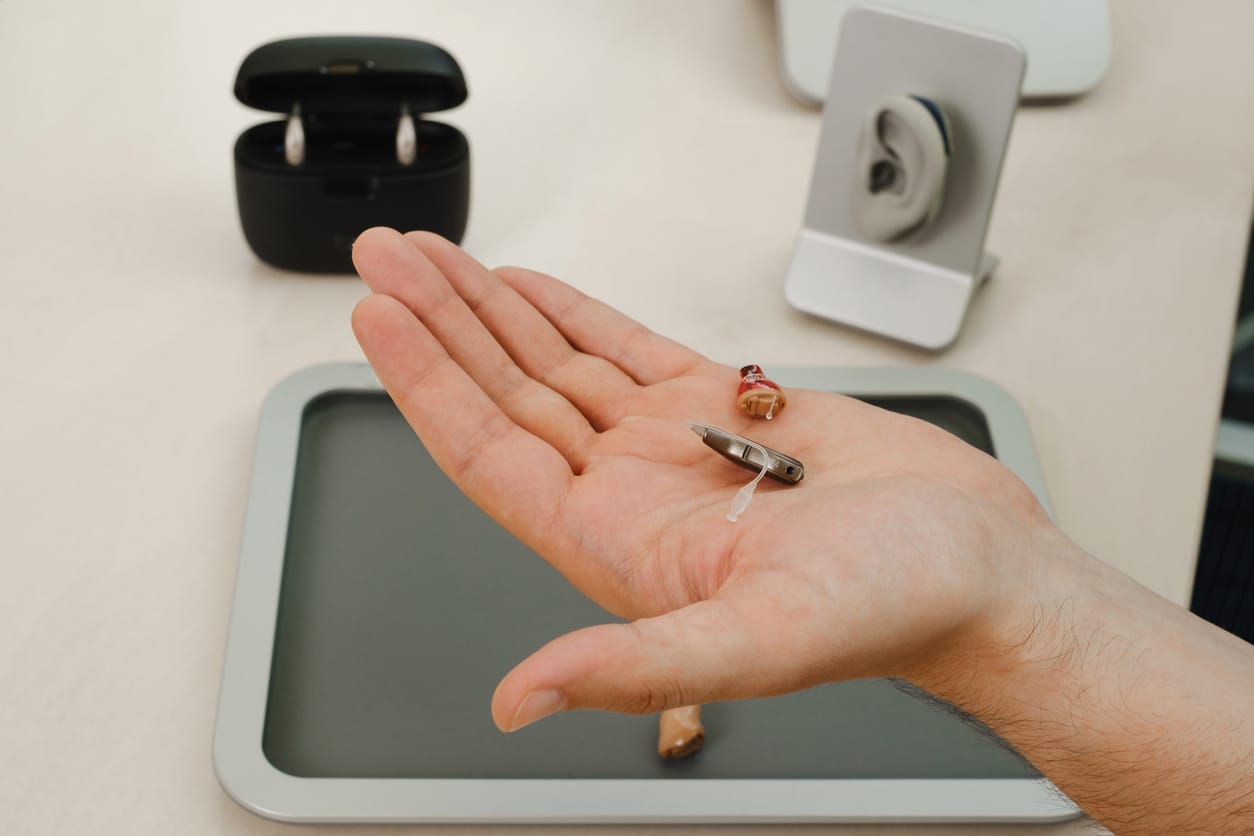Hearing aids are small but mighty tools that reconnect you with the world around you. Like any device you rely on daily, they need regular maintenance to work their best. One of the most important steps in caring for your hearing aids is keeping them clean.
Why Cleaning Matters

Earwax, sweat and debris can build up quickly in and around your devices, especially during hot Tulsa summers. Left unchecked, this can lead to muffled sound, feedback or even damage to sensitive components.
Hearing loss affects approximately 15% of U.S. adults. If you’re among that 15%, you know how important hearing aids are to clear communication. A consistent cleaning routine protects your investment and ensures you continue hearing your best every day.
Your Hearing Aid Cleaning Kit
Before you start, it’s essential to have the right tools on hand. Depending on your device model, some of these may already be included in your hearing aid care kit:
- Cleaning brush: gently sweeps away dirt and wax from the surface and microphone ports
- Wax loop or pick: helps remove built-up wax from hard-to-reach areas
- Soft, lint-free cloth: ideal for wiping down the exterior casing
- Vent cleaner: a thin tool for clearing vents to keep sound pathways open
- Wax filters: these tiny components should be replaced when clogged
- Multi-tool: a handy all-in-one solution that combines a brush and wax pick
Check your device manual or speak with your hearing care provider to double-check you’re using the right tools for your specific hearing aid style.
Cleaning Your Hearing Aids
While every hearing aid is a little different, here’s a general cleaning routine you can follow at home:
- Brush and sweep: brush the microphone ports, casing and ear molds or domes
- Tackle wax: use a wax pick or loop to clear away any visible buildup
- Clear the vents: gently run a vent cleaner through any air vents
- Change wax filters: swap out dirty filters for fresh ones to keep sound crisp
- Wipe it down: use a soft cloth to remove oils and polish the exterior
Special Steps for Behind-the-Ear (BTE) Devices
If you wear a BTE hearing aid, don’t forget to check the tubing. Disconnect it from the device to clean separately. If the tube is stiff or cracked, it may be time for a replacement.
If your tubing and earmold do not contain wires or electronics, you can wash them with mild, soapy water. Rinse thoroughly, use a small air blower to dry them inside and out and reconnect to the hearing aid once completely dry.
Don’t Skip Professional Cleanings
Even with daily care, your hearing aids benefit from a deep clean. Plan to visit your hearing specialist every three to six months for a professional cleaning and performance check.
Contact Eastern Oklahoma Ear Nose and Throat – Yale Office today to book your cleaning appointment.